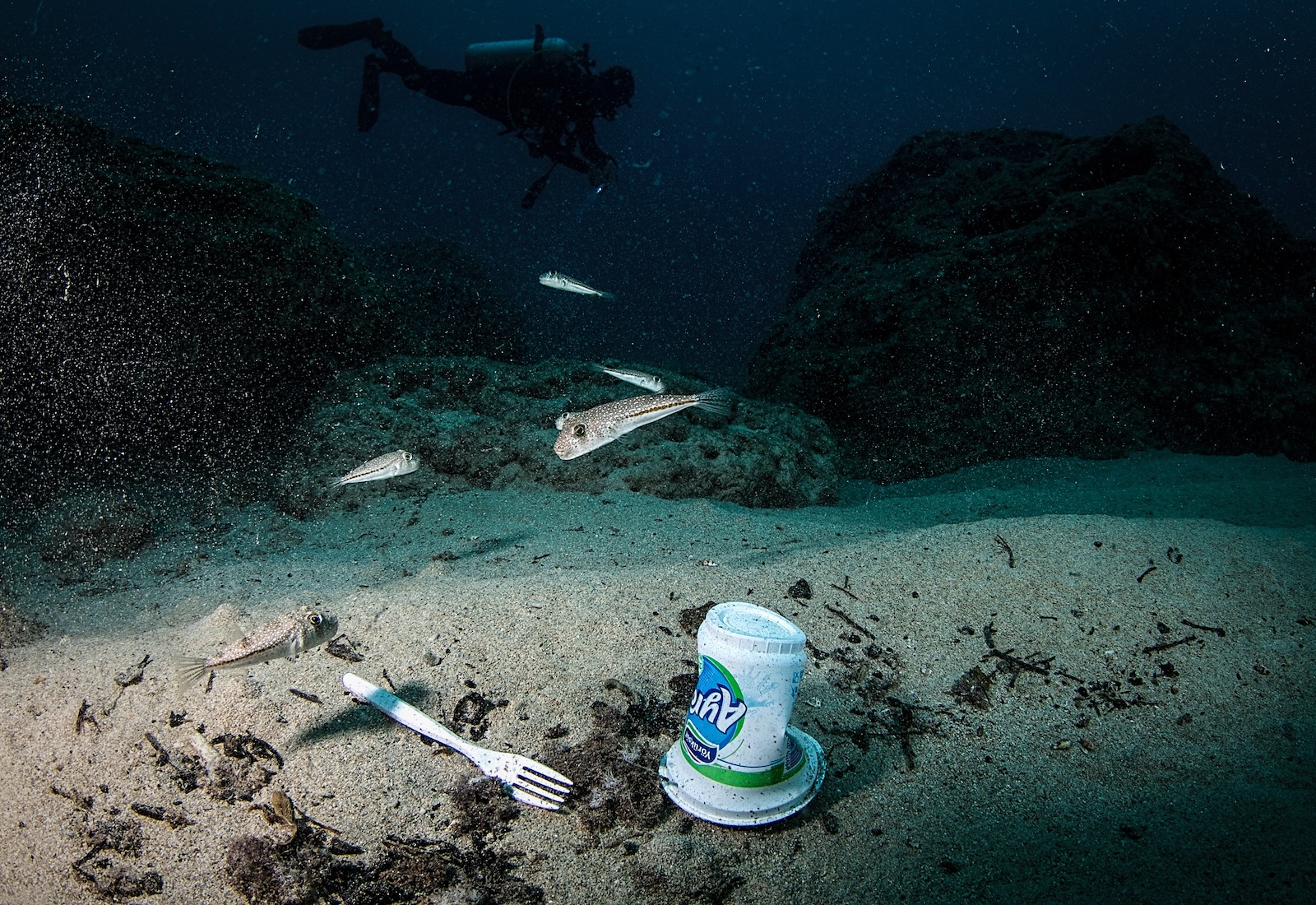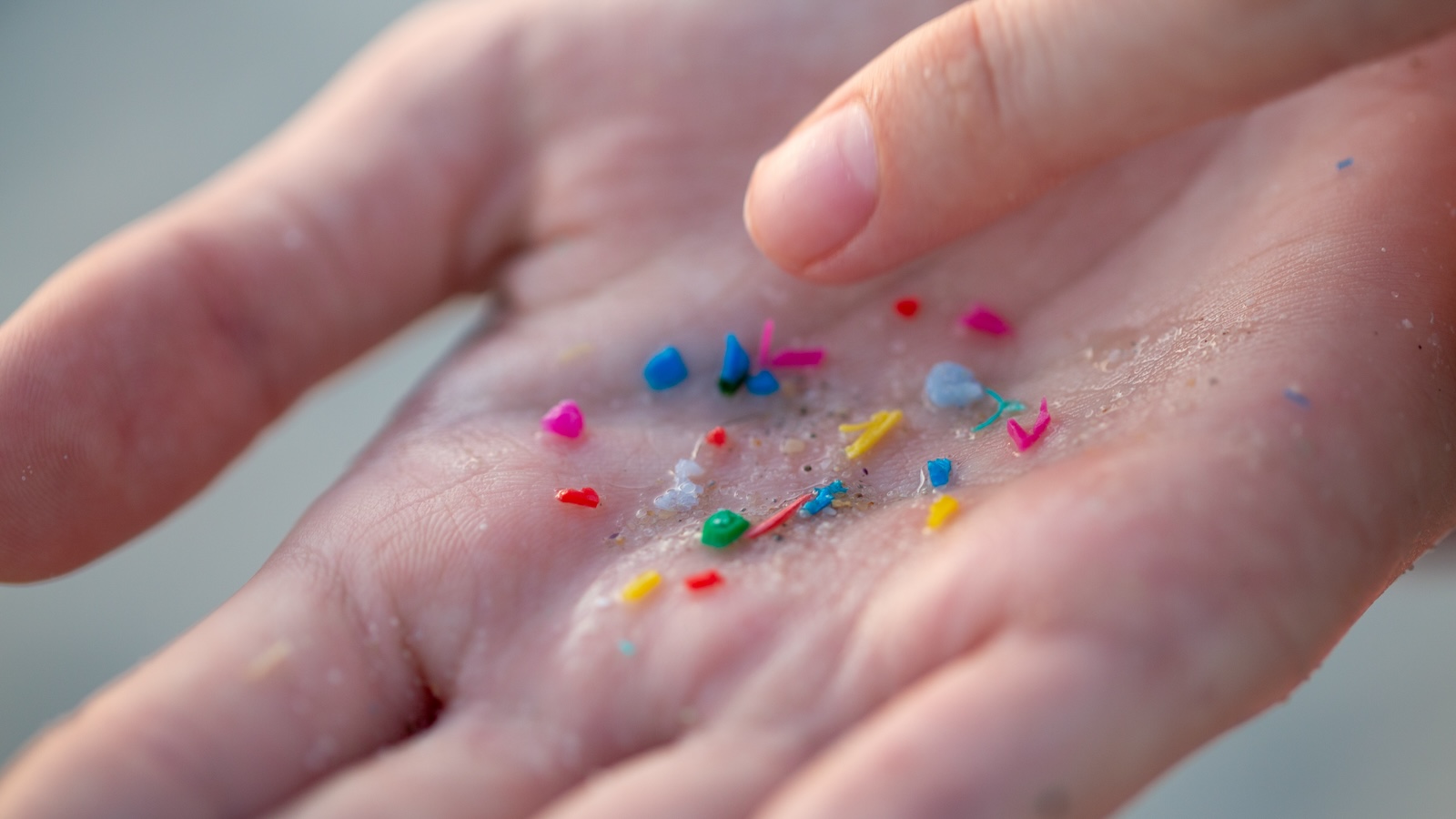No human organ is safe from microplastic contamination, it seems — not even the testicles.
Researchers at the University of New Mexico recently tested 70 samples of testicular tissue — 47 from dogs and 23 from humans — and found microplastics in every single one. The attention-grabbing study, published last week in the journal Toxicological Sciences, highlights microplastics’ “pervasive presence” in male reproductive systems, and their potential consequences on male fertility.
The study isn’t the first to identify microplastics in the human male reproductive system; that came last year, when a small-scale analysis identified microplastics in 6 out of 6 testes and 30 out of 30 semen samples. The new paper built on that research by examining many more testes and finding more than 20 times as much microplastic in human samples as the previous study. The most dominant polymer found in the samples was polyethylene, which is the most commonly produced plastic globally.
The findings add to a growing list of studies finding microplastics throughout the human body, including in livers, lungs, carotid arteries, breast milk, and placentas, the organs that form to provide nutrients to growing fetuses. Microplastics are particles less than 5 millimeters in diameter — about the width of a paperclip — and they tend to slough off of larger plastic items as they break down.
So how do the microplastics get into people’s bodies? The main pathways are through food, beverages, and air. Seafood is a particularly significant source — perhaps because so much plastic pollution winds up in the ocean, where it breaks down and can be mistaken by fish for food. The particles have also been found in dairy milk and other animal products, as well as tap and bottled water, salt, honey, and foods packaged in plastic. Many studies have documented microplastics in dust samples and ambient air, especially indoors. Synthetic clothing, furniture upholstery, and other textiles release microplastics all the time, and one 2022 study estimated that people may inhale more than 48,000 microplastic particles per day.
The mechanism by which microplastics migrate from the lungs and stomach to other parts of the body is not fully understood, but microplastics have been shown to be absorbed into the human bloodstream.

Xiaozhong Yu, an environmental health professor at the University of New Mexico and a co-author of the new study, said he hadn’t expected to see so much microplastic in testicular tissue because of a cell structure called the “blood-testis barrier,” which is supposed to prevent toxic materials from getting into and damaging the testes.
“After we received the dog results I was so surprised,” Yu told Grist. And he was even more taken aback by the human samples, which had on average three times more microplastic contamination: 328 micrograms per gram, versus 123 in dogs. The most contaminated sample of human testicular tissue contained 696 micrograms of plastic per gram. In a testicle that weighs 20 grams (0.7 ounces), that would translate to nearly 14,000 micrograms of plastic per testicle — about the weight of six 6-inch human hairs.
Yu said microplastics may be hitching a ride through the body via blood vessels and then breaking through the blood-testis barrier, though more research is needed to understand how this is happening.
More research is also needed to understand the exact effects of microplastics on reproductive health, although many scientists agree they’re probably bad news. Some 16,000 chemicals are used to make consumer plastic products, and many of them are endocrine disruptors, meaning they mimic or disrupt the body’s natural hormones. In the canine samples Yu tested, certain types of microplastic were associated with smaller testes and lower sperm count. (The human sperm count couldn’t be counted because the testicles had been preserved in a formaldehyde solution.)
Some experts suspect that endocrine-disrupting chemicals are contributing to a globally observed decline in sperm count over the past several decades. According to an analysis published last year, human sperm count fell “appreciably” between 1973 and 2018, with the greatest declines in the years since 2000.
Meanwhile, lab studies have already established that microplastics can damage human cells at levels that reflect what people might be exposed to by ingesting contaminated food and water. Last year, a systematic review commissioned by the California Legislature concluded that microplastics are a “suspected” hazard to humans’ digestive and reproductive systems, and that they may contribute to cancer and respiratory problems.
One of the researchers’ interesting findings was that there was significant variability in the microplastics identified across samples. In humans, testes from those older than 55 showed lower concentrations than those from younger people, and canine testes taken from public veterinary clinics showed higher levels of microplastics than those from private clinics. The authors couldn’t explain these observations, but said they highlighted a “complex interplay of environment, dietary, and lifestyle factors in the accumulation of microplastics within biological tissues.” There’s not yet much research yet on how microplastics impact different populations, but experts say that vulnerable populations are more likely to be harmed by the production, use, and disposal of plastics more broadly.
Although microplastics are virtually everywhere, Tracey Woodruff, a professor of reproductive sciences at the University of California, San Francisco School of Medicine, said that it’s possible for people to limit their exposure. Because food and water are two of the main ways microplastics can get into people’s bodies, her tips include opting for nonplastic food and drink containers, not storing food in plastic wrap, and shifting away from highly processed foods, which may have more microplastic contamination than unprocessed ones. She also recommends keeping plastic out of the microwave, and — because microplastics are released from synthetic clothing and can migrate through dust particles — washing your hands before you eat.
The problem can feel overwhelming, Woodruff said, but consumers shouldn’t be solely responsible for protecting themselves. She called for policymakers and regulatory agencies to limit the growth of the plastics industry so there’s less of the stuff being produced in the first place.
“It is prudent to act now,” she said, pointing to ongoing negotiations over the United Nations’ global plastics treaty, where some countries are fiercely advocating for a cap on plastic production. “We don’t need more plastics in our lives.”
This story has been updated.





